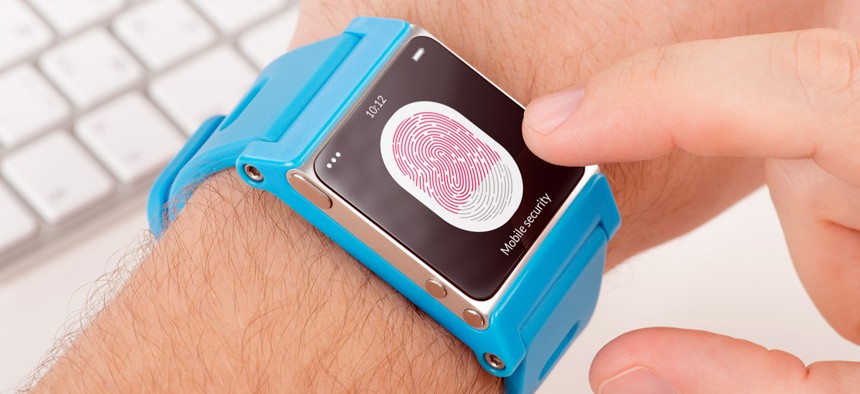In the Future, We’ll All Use Our Phones to Identify Ourselves

Alexey Boldin/Shutterstock.com
The most successful mobile identity services highly depend on collaboration between public authorities, banks, telecom operators and the private sector.
Neville Pattinson is the senior vice president of government sales at Austin-based Gemalto North America.
By the end of 2016, 96 percent of individuals worldwide will be equipped with mobile technology, according to the OECD. Mobile identity -- the creation of a mechanism for accessing online services with a high level of security on mobile devices -- is on the march.
The recent adoption of Near Field Communication by Apple, for Apple Pay and the Apple Watch, is a strong signal for public authorities and markets. Mobile identity will be the virtual umbilical cord continuously linking each individual to their public or social life.
A number of pioneering countries are already tackling the challenge of widespread adoption and use of secure mobile identities. For some, the answer lies in operator-level approaches; for others, it is rooted in the existing physical and digital identities created by government.
Whatever the approach, the most successful mobile identity services already launched are highly dependent on collaboration between public authorities, banks, telecom operators and the private sector.
The end user – the citizen – must be considered, however, as past best practices may no longer be applicable in the future of mobile identity. Technology and innovation will not motivate users. Communication on the extraordinary security effort implemented and the legal validity of the system only generates mistrust. It spreads the idea that if there is still pride in the fact that the system is so different and unique, the system is still certainly immature.
Just as the presence of airbags and the best stopping distance have ceased to be factors in choosing a car, mobile Internet, too, has become an everyday practice; it follows the same rules.
The migration from a paper-based culture to an electronic culture represents something of a revolution, but it is a necessary transition. The National Strategy for Trusted Identities in Cyberspace in the U.S. is a good example of how collaboration between the private sector, advocacy groups, public sector agencies and other organizations can lead to improved privacy, security and convenience of online transactions.
The goal of this White House initiative was to help individuals and organizations use secure, efficient, easy-to-use and interoperable identity credentials to access online services in a manner that promotes confidence, privacy, choice and innovation.
A core tenet of the NSTIC is that implementation must be led by the private sector. Thus, the Identity Ecosystem Steering Group was created as the private sector-led organization tasked with crafting a trust framework that can replace passwords, allowing individuals to prove online they are who they claim to be and enhancing privacy by administering the development of policy, standards and accreditation processes for the Identity Ecosystem Framework.
The U.S. government’s role will be that of an early adopter of the identity ecosystem. The key to enabling this NSTIC benchmark is Connect.gov, a shared enterprise cloud service that would provide an “easy button” for agencies to integrate with the entire range of Federal Identity, Credential and Access Management-approved credentials while allowing citizens to use these private sector-issued credentials across agencies and applications.
Given these and other case stories, there’s no question mobile identity services’ uptake is multiplying. What remains is to adopt the new structure and codes needed to govern associated services and transactions. In this context, the role of the public authorities is to:
- Be an early adopter of new technology;
- Build and nurture a national momentum for innovation;
- Support and coordinate the local government investments through which local transformations, close to the community, can operate effectively and efficiently; and
- Make sure these multiple local experiments create a coherent and interoperable spectrum of solutions, because mobile citizens, going from one city to another, will need to find similar modes of services wherever they may be.
We should enthusiastically welcome the spread of mobile, the rapid convergence of manufacturers working on mobile security, the availability of robust secure technologies that have already tested in national mobile ID schemes and the spread of NFC as a contactless technology to access information and communicate with all the objects present in our day-to-day environment.
If we can do that, citizens will be able to use their phones as an authentication and signature tool in an environment they can trust, opening the door to a rich array of e-government services – such as filing taxes, signing government documents or applying for a visa.
The future is being decided now and the sustainable society is everywhere within striking distance, just one bold mobile e-government or “smart city” program away. The modernization of identity, identification and trust in the identity of others might just be the foundation stones of this sustainable society.
Ultimately, these programs share a common mission: to bring people closer together, connect them, make their interactions more productive and fulfilling, and why not to nourish the hope of better life.
(Image via Alexey Boldin/ Shutterstock.com)






